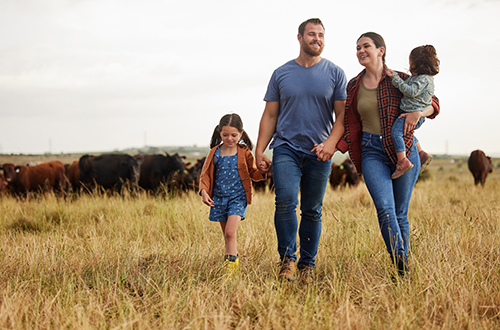“Cash is King” when it comes to running a business and maintaining a good cashflow is vital if your business is to stay operational.
What is cashflow?
Cashflow is the movement of cash through a business from cash inflows: revenue sources, grant income, investment from the owners or cash received from bank loans and overdrafts less cash outflows: operational expenses, tax payments and loan repayments etc. A healthy cashflow is required to support the business with its day-to-day operations or help future investment within the business or by supporting new projects.
Cashflow is different to the profits of a business. Whereas the profits are the surplus after all expenses have been deducted from revenue. It is an overall snap shot of the business over a period of time from which tax is deducted. In determining the profits there are often non-cash items included like depreciation and accrued expenses, but as these are not cash based these would not be found in a cashflow statement. The profit belongs to the owners of the business whereas the cashflow is more about the business and how it is managed. Cash is important as if all the cash is all tied up in assets, stock or debtors then there may be little cash left to pay suppliers, repay loans or pay employees or service customers. If you are unable to maintain business relationships with any of the above and the relationships breakdown, the business could easily fail.
A cashflow can be prepared on a spreadsheet like excel or you can use specific software to help manage your cashflow. The cashflow will start with the opening cash balance, the movement in cash within the period and show the closing cash balance. The cashflow will summarise the actual cash in and out of a business as well as forecasting the estimated future cashflows for the forthcoming months. This can help manage the cash requirements of the business and can track trends over time.
If you find that you have a low or negative cashflow, this means the business is spending more money than it is earning. You will require cash to be input into the business to reduce this funding gap and overcome the shortfall in cash. You can reduce the impact of the reduced cash by rescheduling spending plans, concentrating on collecting cash, cutting back on investments and selling any unwanted assets. If the cash shortfall cannot be rectified from the above actions, cash must be found from elsewhere like loans/overdrafts or from personal investment from the owners. Do remember that if loans are going to be used to bridge the shortfall in cash then the additional interest payments need to be included in the future cashflow for the forthcoming months.
Cashflow statements only form part of the tools that are available to help you manage your business. The cashflow statement should be part of your overall business plan, along with the budget. The budget should be prepared for a year ahead and is part of the planning process. The budget and cashflow statements can be used together to check possible future scenarios by stress testing the business to determine if the business can survive certain situations. For example: what happens to the businesses cashflow and profits if loan interest rates go up, fertiliser and energy prices increase or the loss of BPS? These all sound like current issues that are facing farmers each and every day and you need to ensure that the business can overcome these hurdles. By utilising tools you can highlight issues in advance of them happening so you have more time to mitigate the problems.
And finally, all business need to consider paying tax either via the business or personally. Cash needs to be put aside to ensure these payments are made on time. Consider the current situation for arable farmers: The 2022 harvest generated sales at much higher crop sales prices. However these crops were grown with inputs that were purchased before the price increases. This has lead to higher profits and therefore higher tax liabilities for the 2022/23 tax year, which will not be covered by the payments on account that have been made previously. Therefore, in January 2024 there is an expectation that there will be large balancing payments to be made as well as higher payments on account towards the 2024/25 tax year, which will contribute to a cash shortfall. This will be impacted further by the higher input costs and the additional profits being taxed through the change in the basis period. While
farmer’s averaging
may help to smooth the profits, it may not completely resolve the issue.
If you do decide that it is time that you should be looking at preparing a cash flow, then please do get in touch with us .
This article is from the latest edition of our Agricultural Briefing. To receive future copies of any of our newsletters directly to your inbox, please visit our preference centre to register your interest.
If you have any questions about the above, or would like more information specific to your circumstances, please enter your email address below and we will get in touch:
















